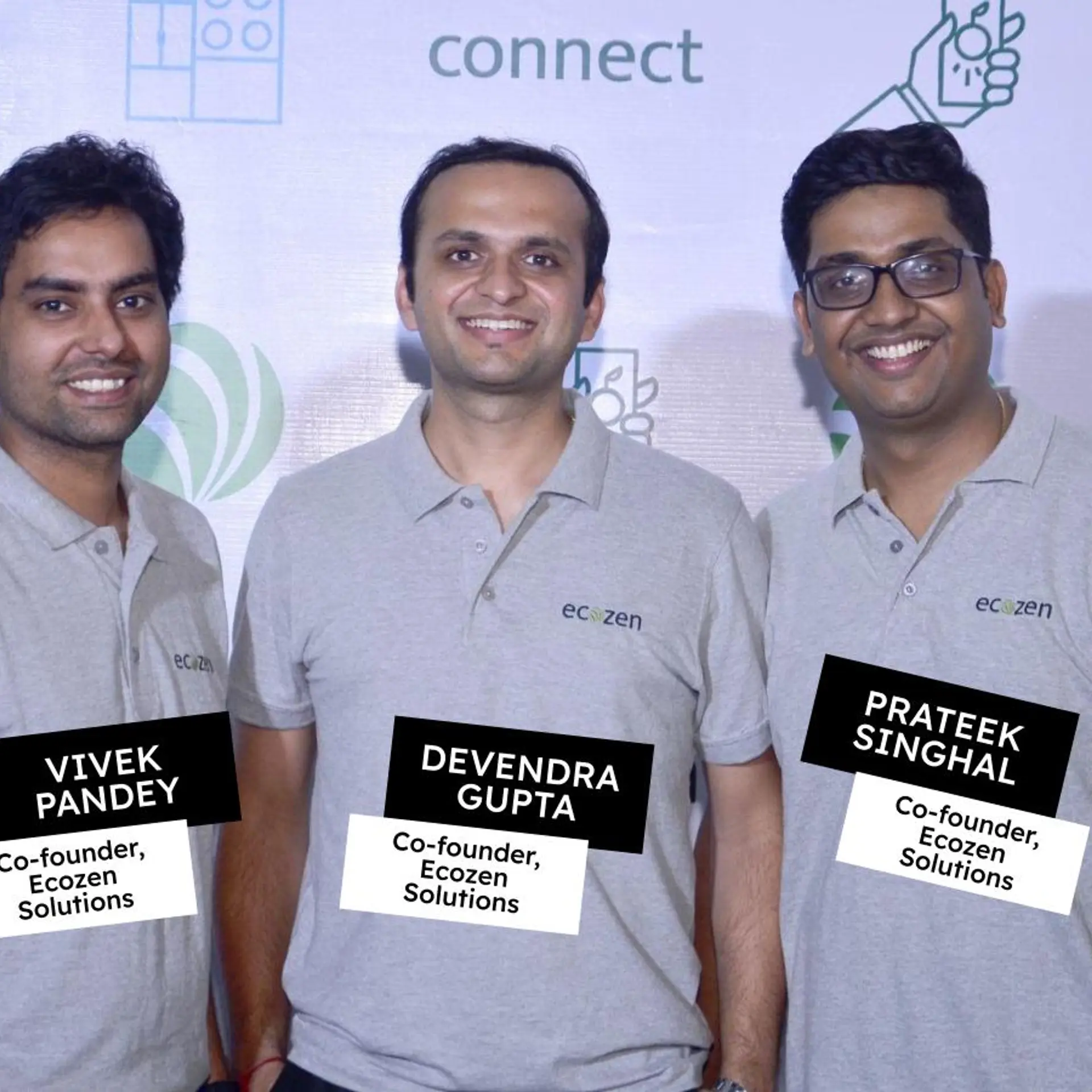TeamOhana’s unique way to help companies manage headcount, reduce cash burn
HRtech startup TeamOhana, founded by Helpshift founder Baishampayan Ghose and a former executive Tushar Makhija, offers a headcount management platform to help companies organise their hiring better.
One of the most difficult challenges for any innovative startup is in figuring out the needs of the customer and deciding on what and when to build a suitable product. Often, customers could only share their pain, and the company gets into their shoes to figure out a viable solution for the problem.
As the Co-founder and CTO of , a San Francisco-based mobile-first customer service technology startup, Baishampayan Ghose (BG) looked closely at the overall tech team hiring strategies.
He had hired Tushar Makhija as the startup’s first Vice President of Sales, who after working closely for seven years, moved on to become the VP of Sales at Airbase — a San Francisco-headquartered all-in-one spend management platform.
Here, he learned from various startup CFOs, including Gong, Coda, and Docker, that while Airbase could track 10% of their operating expenses, nearly 70-80% expenses (mainly headcount) were managed on a spreadsheet by the companies.
Besides, the onset of the COVID-19 pandemic—which gave birth to the work-from-home/remote work culture—complicated the issue. Companies found it hard to track real-time information on present and future headcounts, and strategic planning seemed to be a significant challenge.
In March 2021, BG and Tushar started the B2B HRtech startup , formalising an idea that would eventually become the TeamOhana headcount management platform. The duo launched the startup in stealth mode in October 2021.

The team
Started by a former Uber exec, this startup is making AI accessible to enterprises of all sizes
Fundraising
A year later, in October 2022, the duo formally launched TeamOhana and raised $4 million in seed investment led by Sierra Ventures with participation from Katalyst Ventures.
Moreover, angel investors, including Akshay Kothari (COO, Notion), Samuel Adeyemo (Co-founder Aurora Sola), Thejo Kate (Founder and CEO, Airbase), Brad Goldoor (Co-founder and Chief People Officer, Phenom), Anshu Sharma (Co-founder and CEO, Skyflow), Sarika Garg (Co-founder and CEO, Cacheflow), Sharath Narayana (Co-founder, Observe.AI), Shamir Karkal (Co-founder and CEO, Sila), Keith Masuda (VP of Finance, Modern Treasury), and Rob Glickman (CMO at Cledara, and former CMO, Treasure Data), also participated in the round.
Speaking on the funding, Vignesh Ravikumar, Partner at Sierra Ventures, said, "We invest in exceptional entrepreneurs building the next generation of enterprise apps. TeamOhana is a prime example of modern software that can enable business functions to become strategic rather than reactive. Their product provides companies with the necessary data and processes to make effective and data-driven decisions about their headcount.”
The company charges its client on a freemium model for its headcount management platform. However, it did not share the prices for its business model.
Reducing costs
Today, businesses tend to spend close to 70-80% of their operating budget— amounting to tens of millions of dollars—on their employees.
TeamOhana's main objective is to eliminate layoffs resulting from poor headcount planning and management—one of the biggest problems in many modern businesses—ultimately leading to missed business goals and delayed revenue.
Some examples include companies overhiring and overspending, and to meaningfully reduce cash burn, they resort to layoffs. “It’s the consequence we are seeing all around the tech community today,” says BG.
To make smart people decisions, companies need to pull together and reconcile data from multiple sources — applicant tracking systems (ATS), human resources information systems (HRIS), hiring plans, compensation plans, and more.
Many times, companies reconcile this data in large spreadsheet(s) and review it once per month, or worse, once every quarter. According to BG, “There is no easy automated or fast way to do this; it is a highly manual effort that does not occur in real-time.”
He adds, “Business leaders cannot accurately review real-time information — who’s on the team, who’s been hired and when, how do everyone’s salaries impacts the budget, and so on.”
TeamOhana’s collaborative platform helps companies plan and manage their headcount by delivering a collaborative workflow and bringing together finance, talent, and hiring managers — all onto one unified platform.
“By integrating across systems, we unify people, processes, and data into a single source of truth, so companies can achieve their business goals faster and more effectively,” explains BG.
Workings of the platform
BG and Tushar spoke to companies with 250-1,500 employees and asked them to go through their hiring strategies and plans. The first iteration of TeamOhana’s product was a spreadsheet, updated using a Google Form.
“Thanks to tools like Whimsical, we could map the early UI/UX without writing any code. These interviews helped us triangulate the key workflows we need to build and the set of necessary actions to make the MVP usable,” BG explains.
The startup used these mock-ups to collect feedback from a smaller group of companies, of which five opted to become its design partners, willing to connect their data sources and use the product in real situations.
The first iteration of the product was shipped on December 14, 2021, and the company started working with its customers as early as February 2022.
Amid the COVID-19 pandemic, between March 2021 and October 2022, the co-founders spoke to over 50 companies and conducted nearly 100 interviews with the finance, HR, and talent leaders, documenting their work on the spreadsheets.
"Most companies used Google Forms to collect headcount requests and Jira tickets to request changes to headcounts or employee information. Most of the ad-hoc communication happened on Slack, and there was no real audit trail,” recalls BG.
While building a product as a second or a third mover, companies have the hindsight to avoid certain mistakes and do things better. TeamOhana has little to look at for inspiration and ideas, relying actively on its customer learning to iterate rapidly.
“A lot of this boils down to having the right team, tools, and technologies in place. This is still one of the most challenging aspects of building a pioneering product, and it is something that keeps us on our toes,” says BG.
With a remote-first work culture, TeamOhana has 19 employees in its workforce, including in the US, Europe, Asia, and Africa.
According to an IMARC report, the HRtech market was at $850 million in 2021, expected to touch over $1,510 million by 2027.
While the startup’s offerings differ from many other HRtech startups, it competes with some of the major names in the industry — Darwinbox, GreyTHR, and Salesforce, among others.
Speaking of the future, BG says, “At TeamOhana, we believe the true power behind any winning organisation is the people who comprise it and how well they work together. Building the ‘team of the future’ requires high levels of collaboration. It is not just about hiring the best team but also growing responsibly such that headcount growth is in line with revenue.”
“This kind of collaboration only exists with a unified system that elegantly pulls together relevant data so you have a real-time pulse on headcount. We envision knocking down brick walls between people and people-data to deliver headcount transparency as the superpower for exponential and responsible growth,” he adds.
Edited by Suman Singh







